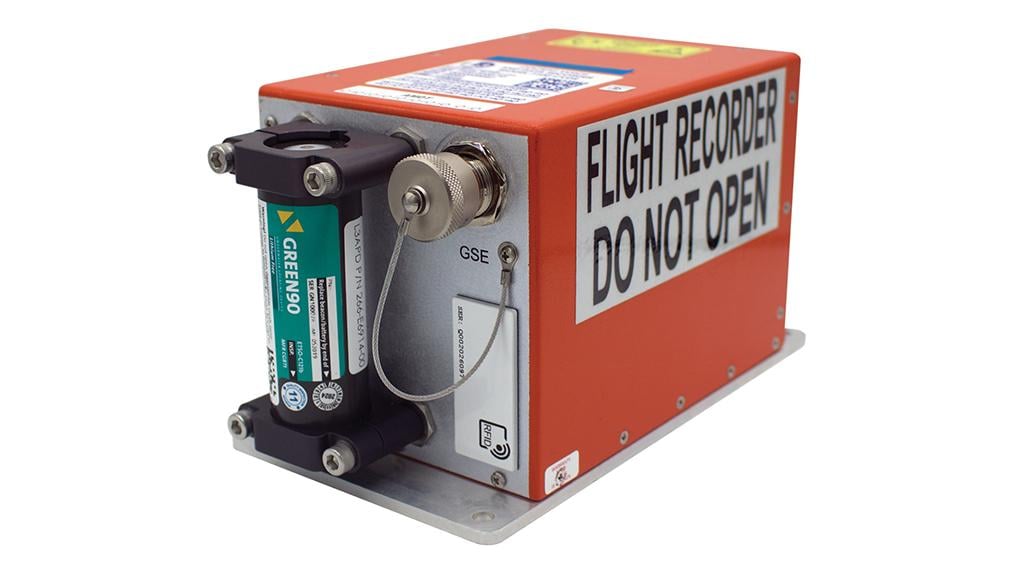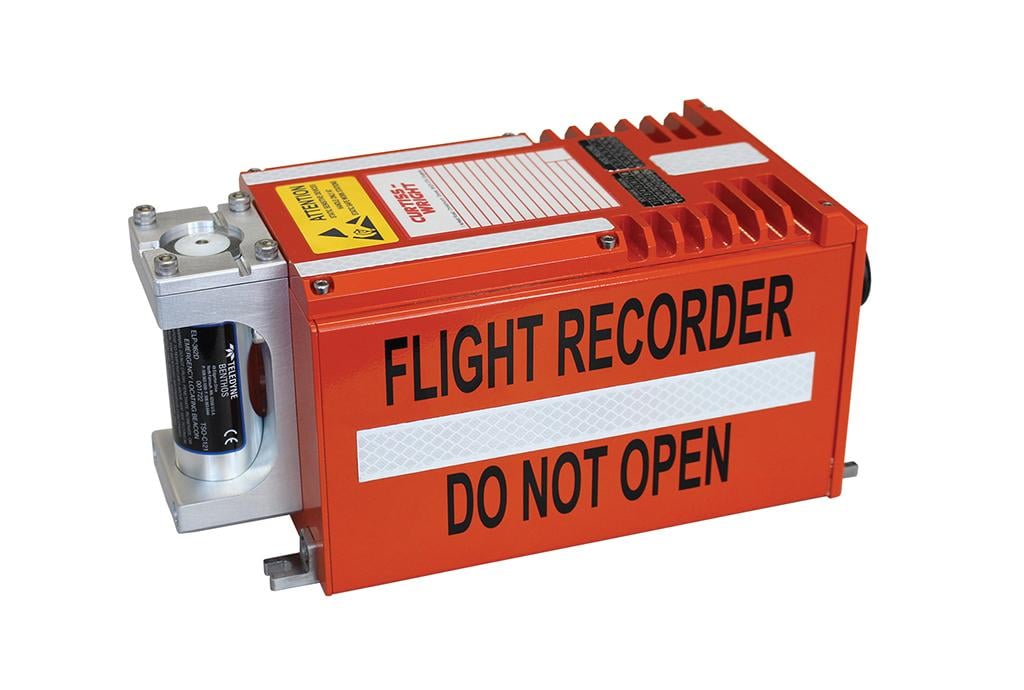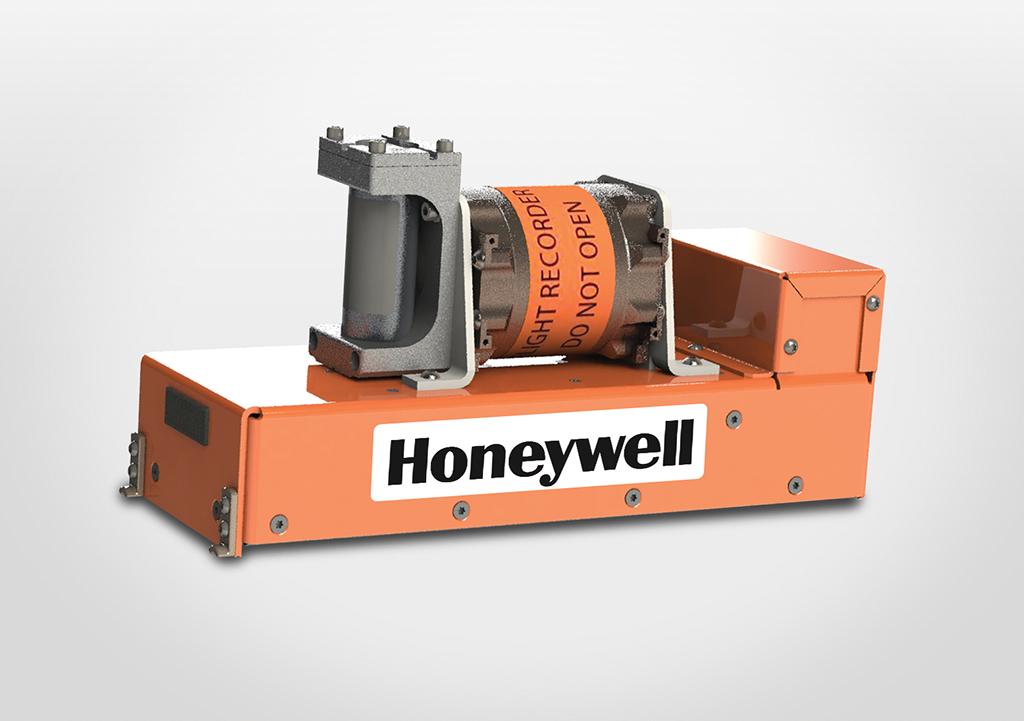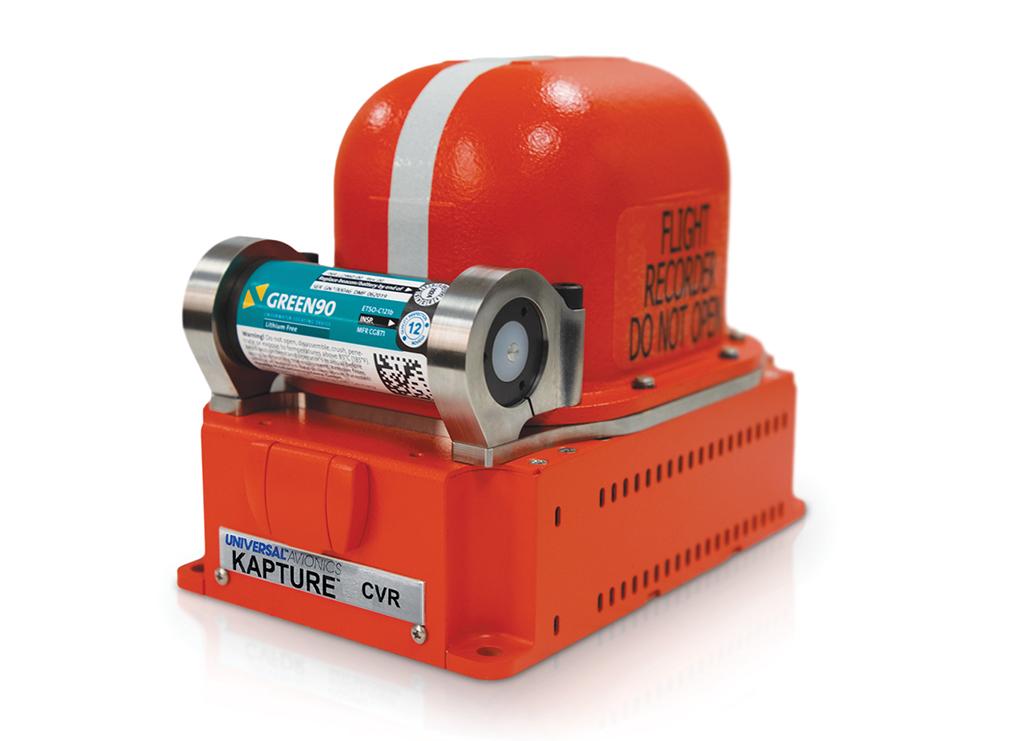Next-Gen Cockpit Voice Recorders Boost Time, Data Capabilities

L3Harris has combined its cockpit voice recorders and flight data recorders into a single unit.
A new generation of cockpit voice recorders is emerging on the market, thanks to advances in digital technology in combination with regulatory mandates.
Stephen Leaper, product line manager for flight recorders for Curtiss-Wright, explains that until recently, the technology effectively restricted recording capacity to 2 hr. “But, with the advent of higher capacity memory devices, the CVR [cockpit voice recorder] recording duration was increased to provide parity with the flight data recorder [FDR], which was already at 25 hr.,” he notes.
To illustrate, Leaper says the first generation of digital CVRs had 32 MB of memory, but the next-gen systems incorporate 64 MB, which enable all of the data acquired by the longer recording capability to be digitally stored.
On the regulatory side, Leaper explains a European Union Aviation Safety Agency (EASA) regulation, dated Dec. 9, 2020—with an effective date of Jan. 1, 2022—requires any aircraft with a maximum takeoff weight of 27,000 kg. (60,000 lb.) or more be equipped with a CVR with at least a 25-hr. recording capability.
The 25-hr. recording capability, says Leaper, is the “most recent innovation in the evolution of CVR technology.” In that regard, he cites the Curtiss-Wright Fortress 757/DAFR (Data Acquisition Flight Recorder), which was introduced in 2018.

The Fortress/DAFR, Leaper reports, was designed to combine four functions in one box. They are the CVR, incorporating four channels of audio recording for 25 hr. per channel; the FDR, which offers 25 hr. of parametric data; the data link, recording 25 hr. of air-to-ground digital messaging; and an image recorder that provides up to 2 hr. of cockpit instrumentation image capture. The four channels within the CVR work in tandem and record cockpit noise, pilot and copilot voice communications, as well as cabin sound.
The Fortress, Leaper explains, is a TSO (Technical Standards Order) flight recorder, which is suitable for all aircraft types.
“It’s small and compact and can therefore fit in most space envelopes allocated to recorders,” he says. “We have Fortress installed on UAVs, rotorcraft, small fixed-wing aircraft and business jets. In addition, we have installations on military helicopters and fixed-wing fighters, so we are satisfying a ‘one product fits all’ approach.”
Darshan Gandhi, director of product management and business development for flight recorders and connectivity at L3Harris, points out the increase in CVR recording time to 25 hr. from 2 hr. is based on the premise that a 25-hr. recording can capture the entire conversations and sounds on flight legs in excess of 2 hr., as well as on multiple shorter flights.
“This data provides valuable information for issues that might have been encountered on previous flights, along with preserving essential pilot observations,” he says.
Gandhi also reports CVRs are now equipped with 10 min. of backup power for the cockpit-area microphone, in case the aircraft power goes out. “This backup can provide critical clues when all other systems may have shut down and data transmission was no longer possible,” he notes.
The extended recording time, says Gandhi, applies to up to four channels of cockpit voice, which include three pilot microphones and a cockpit-area microphone, as well as the data link recordings, such as air traffic control messages sent digitally.
“These changes dramatically increased the memory requirements in the crash-survivable memory unit (CSMU) which resulted in new recorder designs,” he notes.
As Gandhi explains, L3Harris developed the SRVIVR25 portfolio of CVRs and FDRs for air transport, including regional airliner platforms. In addition to memory changes, L3Harris implemented newer processor technology, making the SRVIVR25 recorders a high-density computing platform. This allows the FDR to monitor critical flight parameters, determine if the aircraft is in distress and enable data-streaming to devices.
“Noting that air transport and business jets require two recorders, installed as separately contained CVRs and FDRs, L3Harris has combined both into a single unit and still provides complete redundancy,” says Gandhi. “A good example of this is the Airbus A320 specifications which call for two (single unit) SRVIVR25-CVDRs [cockpit voice and data recorders]. Instead of one CVR and one FDR, the specification calls for two SRVIVR25 CVDRs.”
He says in addition to their single-unit design, one of the advantages of CVDRs is their ability to stream both cockpit audio and flight data simultaneously for real-time analysis, as well as a single CSMU for data storage and extraction point for post-incidence investigation.
Asked about the possibility of CVRs working in conjunction with cockpit video recordings, Gandhi points out most airlines do not allow that combination due to pilot privacy concerns. “However, the technology is available today,” he says.
At the same time, Gandhi cautions in order to ensure reliable voice and data transmission, the aircraft’s antenna must be oriented to the satellites to prevent interruptions if the aircraft has a strange orientation during a maneuver or stall.
“Real-time data-streaming, which L3Harris has been evaluating for several years, can be another alternative to augment these traditional black boxes limitations,” Gandhi says.
Borka Vlacic, director of product management at Honeywell Aerospace, reports the OEM has implemented a technology that can be used to refresh its CVRs, which includes improved audio encoding for better audio quality. At the same time, Honeywell has introduced connectivity solutions for CVRs that offer the capability to stream any CVR channel independently.
Vlacic confirms CVR technology is moving more toward real-time streaming and cloud-uploaded data.

“This is the concept Honeywell believes in, because you would have real-time data immediately available for the purpose of timely recovery, along with real-time analysis and distress monitoring,” she points out. “The Black Box In The Sky (BBITS) concept will allow for connectivity and storing the data in cloud, which can be configured based on customer need.” She says streaming functionality is an additional way to recover the data in case of an incident. “It provides the data from the recorder to the customer anytime.”
Use of the BBITS solution, says Vlacic, can allow bundling of data, voice and video. “The recorder can do any IP [Internet Protocol] activity,” she explains. “The only requirement is bandwidth. Based on that, the recorder can configure which data can be streamed.”
Honeywell has incorporated BBITS technology into its HCR-25 CVR recorder. Designed to meet the OEM’s latest standards, a variant of the HCR-25 is also available as a combination CVR/FDR recorder.
“HCR-25 was designed as a state-of-the-art Honeywell Connected Recorder, and as a form-fit replacement for our current generation of recorders in the air transport market,” Vlacic notes. “Different form factors are considered, such as a lightweight connected recorder for helicopters. HCR-25 recorders are already installed on Honeywell’s Boeing 757 test aircraft and are retrofittable to most aircraft.”
The Kapture 25 CVR/FDR, introduced by Universal Avionics in 2020, meets all the latest TSOs, complies with EASA EUROCAE ED-112A requirements and records controller-pilot data-link communication (CPDLC), according to CEO Dror Yahav. A sixth-generation system, the Kapture 25, offers faster download speeds and incorporates a recorder-independent power supply, which, Yahav says, “eliminates the weight and cost of an external line-replaceable unit as well as the periodic maintenance requirements normally attached to that function.”
“The EASA 25-hr. mandate was a key driver behind the Kapture 25’s introduction,” Yahav points out, adding the system is in use and certified on regional airliners, business jets and “a range of aircraft to be determined.”
Yahav says Kapture 25 was designed to deliver CVR and FDR “as combined capabilities or separate units,” which also support redundant aircraft configurations. Asked if combined CVR/FDR systems are forming a trend, he replies this could depend on aircraft configurations and how current and upcoming regulations alter the required equipage.

Universal Avionics, says Yahav, foresees the ability to collect CVR and FDR data on a continuous basis, and to analyze this data in near real-time. “This can deliver substantial safety-and performance-related insights to operators, but requires an on-board connectivity system ensuring a cost-effective, timely and reliable delivery of CVR/FDR data,” he says.
But, if voice and data constantly are streamed to a central server, could that capability eliminate the need to retrieve CVRs and FDRs from an accident site? According to Yahav, it could, conditionally.
“Provided the process of delivering voice and data to ground servers securely can be demonstrated to achieve suitable timeliness, integrity and reliability levels in all phases of flight, their investigation support could be considered to the extent of the data available without retrieving systems from incident or accident sites,” he responds.
According to L3Harris’ Gandhi, there are still some challenges involving real-time data-streaming for airlines to overcome.
“The current technology to stream voice and data to a central server requires non-interrupted connectivity, provider bandwidth and lower-cost options,” he stresses. “To implement correctly, each flight would send hundreds or thousands of data parameters and multiple channels of voice with complete coverage to the ground from 35,000-40,000 ft.
“Currently, satellite communications are the only means for aircraft connectivity; and older satellite constellations simply do not have sufficient bandwidth. Some newer systems, such as Inmarsat Ka, are designed to provide revenue-generating passenger connectivity, therefore connectivity prioritization could become an issue.”




